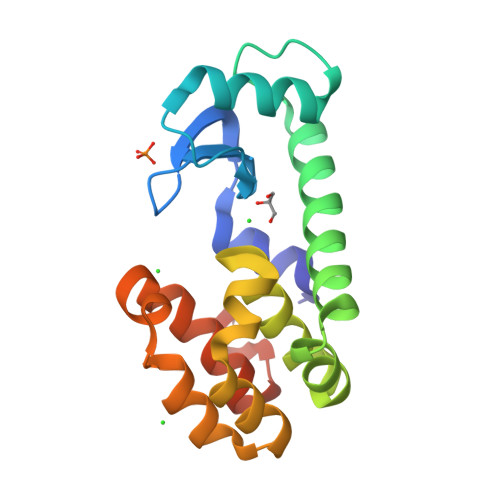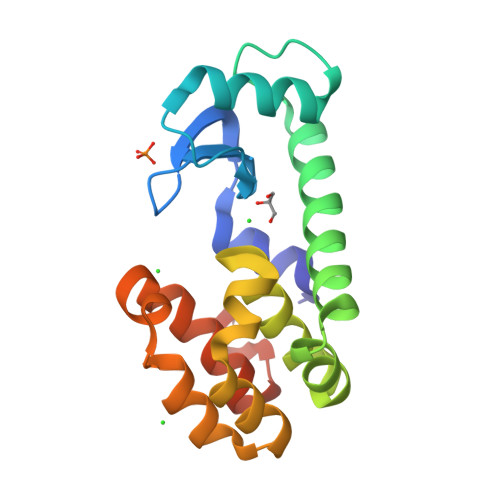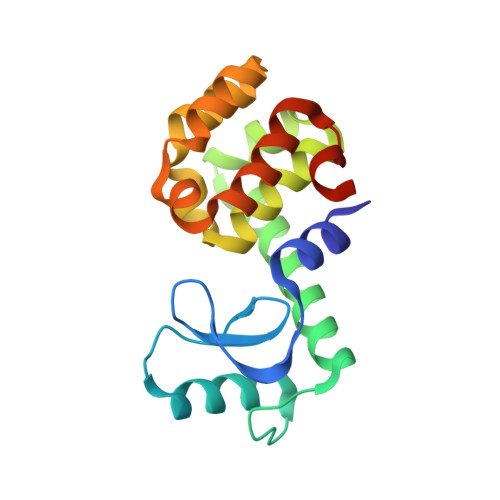Exploring subdomain cooperativity in T4 lysozyme I: Structural and energetic studies of a circular permutant and protein fragment.
Cellitti, J., Llinas, M., Echols, N., Shank, E.A., Gillespie, B., Kwon, E., Crowder, S.M., Dahlquist, F.W., Alber, T., Marqusee, S.(2007) Protein Sci 16: 842-851
- PubMed: 17400926
- DOI: https://doi.org/10.1110/ps.062628607
- Primary Citation of Related Structures:
2O4W, 2O79, 2O7A - PubMed Abstract:
Small proteins are generally observed to fold in an apparent two-state manner. Recently, however, more sensitive techniques have demonstrated that even seemingly single-domain proteins are actually made up of smaller subdomains. T4 lysozyme is one such protein. We explored the relative autonomy of its two individual subdomains and their contribution to the overall stability of T4 lysozyme by examining a circular permutation (CP13*) that relocates the N-terminal A-helix, creating subdomains that are contiguous in sequence. By determining the high-resolution structure of CP13* and characterizing its energy landscape using native state hydrogen exchange (NSHX), we show that connectivity between the subdomains is an important determinant of the energetic cooperativity but not structural integrity of the protein. The circular permutation results in a protein more easily able to populate a partially unfolded form in which the C-terminal subdomain is folded and the N-terminal subdomain is unfolded. We also created a fragment model of this intermediate and demonstrate using X-ray crystallography that its structure is identical to the corresponding residues in the full-length protein with the exception of a small network of hydrophobic interactions. In sum, we conclude that the C-terminal subdomain dominates the energetics of T4 lysozyme folding, and the A-helix serves an important role in coupling the two subdomains.
Organizational Affiliation:
Department of Molecular and Cell Biology and QB3 Institute-Berkeley, University of California, Berkeley, Berkeley, California 94720-3206, USA.



















